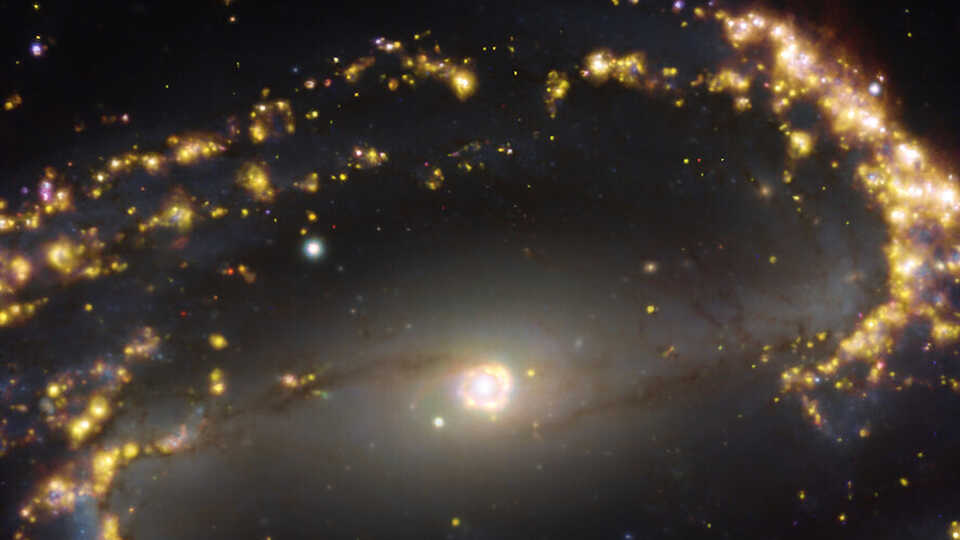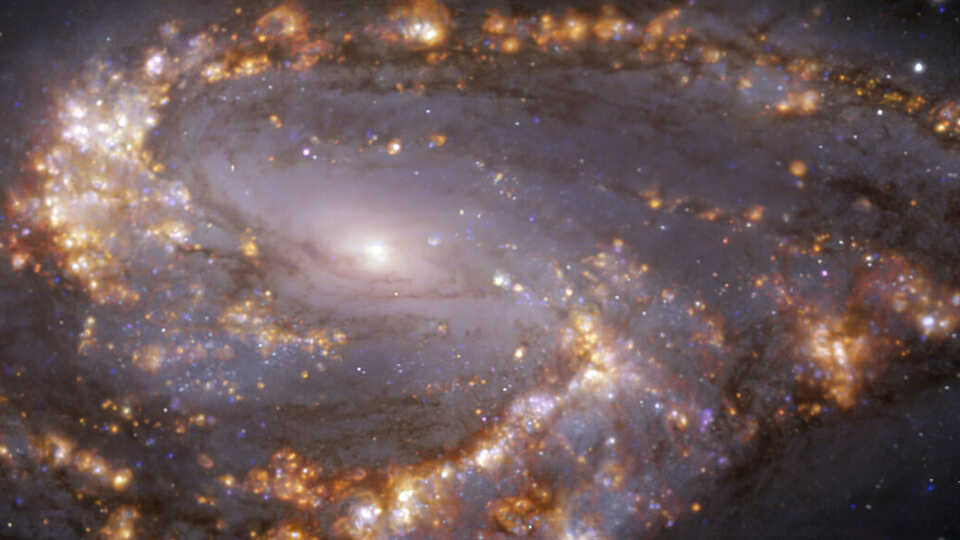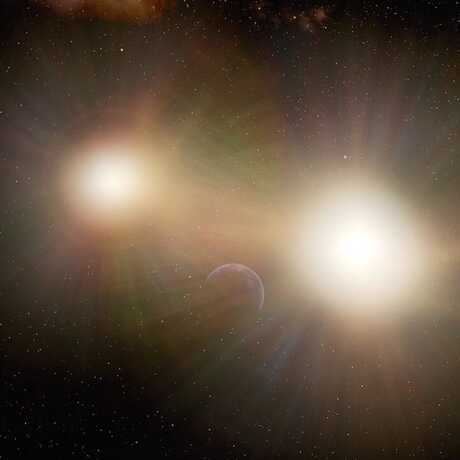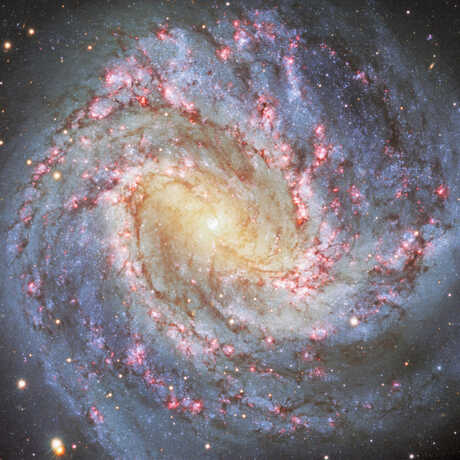Universe Update
ALMA Observations: Moon Formation and Stellar Nurseries
One of the telescopes featured quite prominently in our production of Big Astronomy: People, Places, Discoveries (now playing at Morrison Planetarium and other planetariums around the world) is the Atacama Large Millimeter/submillimeter Array (ALMA). As the name suggests, it’s an array of 66 radio telescopes nestled high on Chajnantor plateau at 5,000 meters (or 16,000 feet) above sea level. Using 66 antennae working together allows for some extraordinary discoveries and we’ll discuss a few of its recent findings today in our regular series, Chilean Observations.
Using ALMA, scientists have for the first time confirmed a moon forming around an exoplanet nearly 400 light-years away! Moons form in circumplanetary disks around planets. These disks contribute to the growth of the planet by regulating the amount of material falling onto them. At the same time, the gas and dust in the circumplanetary disk can come together into progressively larger bodies through multiple collisions, ultimately leading to the birth of moons.
In this case, the planet in question is PDS 70c, a Jupiter-sized planet. Its planetary partner in the system, PDS 70b, has no circumplanetary disk.
“Our work presents a clear detection of a disk in which satellites could be forming,” says Myriam Benisty, a researcher at the University of Chile, who led the new research published last week in The Astrophysical Journal Letters. “Our ALMA observations were obtained at such exquisite resolution that we could clearly identify that the disk is associated with the planet and we are able to constrain its size for the first time.”
You can get an up-close look at the PDS 70 system in the Big Astronomy planetarium show. We pay a virtual visit to the forming planets with some help from a computer simulation by Zhaohuan Zhu (朱照寰) at the University of Nevada, Las Vegas. You can watch a less immersive version here.
ALMA also greatly contributed to a recent survey (from 2013-2019) of 100,000 stellar nurseries across 90 galaxies in the nearby Universe. Several images were released earlier this month and ten papers from the survey were presented at the June meeting of the American Astronomical Society.
The telescope is especially well-suited to mapping cold gas clouds—the parts of galaxies that provide the raw material from which stars form. The images (seen above)—which combined ALMA data and observations from another Chilean telescope, the Very Large Telescope (VLT), which operates at shorter wavelengths of light than ALMA does—aren’t just pretty pictures. They allow astronomers to examine the galactic regions where star formation is happening, compared to where it is expected to happen, so as to better understand what triggers, boosts, or holds back the birth of new stars.
Looking at the images, it’s unsurprising then that one of the papers from the new survey has determined a wide diversity among these star forming regions, which can birth thousands or tens of thousands of new stars. “We used to think that all stellar nurseries across every galaxy must look more or less the same, but this survey has revealed that this is not the case, and stellar nurseries change from place to place,” says Adam Leroy of Ohio State University. “This is the first time that we have ever taken millimeter-wave images of many nearby galaxies that have the same sharpness and quality as optical pictures. And while optical pictures show us light from stars, these ground-breaking new images show us the molecular clouds that form those stars.”
As with many places here on Earth, it’s all about location, location, location. “To understand how stars form, we need to link the birth of a single star back to its place in the Universe. It’s like linking a person to their home, neighborhood, city, and region. If a galaxy represents a city, then the neighborhood is the spiral arm, the house the star-forming unit, and nearby galaxies are neighboring cities in the region,” explains Eva Schinnerer, an astronomer at the Max Planck Institute for Astronomy. “These observations have taught us that the ‘neighborhood’ has small but pronounced effects on where and how many stars are born.”
“This is the first time we have gotten a clear view of the population of stellar nurseries across the whole nearby Universe. In that sense, it’s a big step towards understanding where we come from,” said Leroy.






